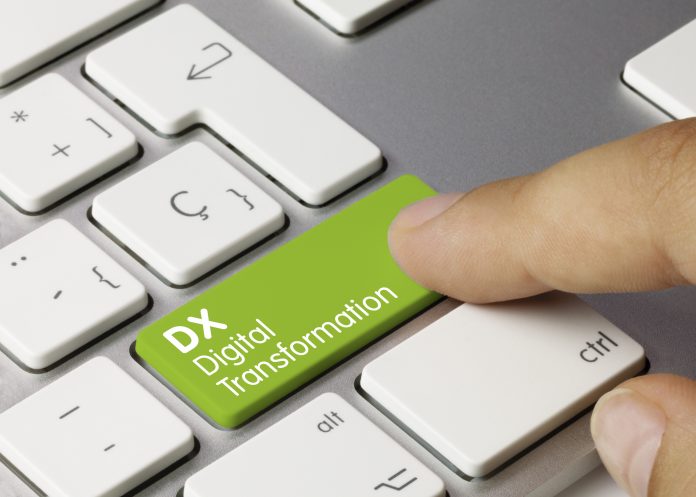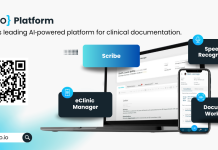Salvatore Sinno, Chief Security Architect and Director of Cybersecurity Innovation at Unisys speaks to Open Access Government about how he defines digital transformation
In this interview, Salvatore Sinno, Chief Security Architect and Director of Cybersecurity Innovation at Unisys speaks to Open Access Government about how he defines digital transformation and where he sees it heading in the future. He also explains how disruptive technologies, including cloud, artificial intelligence (AI) and blockchain promise to transform the way businesses operate and serve customers.
Also, Salvatore explains how digital transformations work when they are well-planned and executed when security is not an afterthought, and the business impact is steady and sustainable over the long-term. In light of the UK under lockdown, we also learn about the extent to which many Brits have been forced to embrace digital technologies like the older generation. Finally, on security, Salvatore details some of the firm’s findings concerning how digital risk falls dramatically during the pandemic, including online shopping and cybercrimes.
How would you define digital transformation?
Digital transformation fundamentally changes how the enterprise operates and delivers value to customers – in essence, it is the transition of an organisation’s technology, culture and processes in a digital world. It’s not only a technical change, but also a cultural shift that requires organisations to challenge the status quo, adapt and evolve continually.
Digital transformation is an enabler and has introduced fundamental changes in business operations through improved customer service, payments, business models and new methods of online engagement. However, it is not the use of technology as an end in itself that adds value, but rather the application of technology to enhance the business value.
Disruptive technologies, including cloud, AI and blockchain promise to transform the way businesses operate and serve customers. Organisations across industries around the globe now realise that digital transformation is much more than a buzzword. They are looking to embrace digital in a way that delivers meaningful outcomes.
Tell us how disruptive technologies, including cloud, AI and blockchain promise to transform the way businesses operate and serve customers.
Organisations across all industries are investing in AI to automate the value chain and serve customers, which is expected to reach $191 billion by 2025. The same is happening in the blockchain where Gartner estimates blockchain technology is accelerating at a fast pace which will deliver the business value of over $3 trillion by 2030.
In the field of AI, Deep Learning has the power to process data in their raw form, which is an ability absent in conventional machine learning. This allows the “artificial” intelligence to improve tasks such as visual object and speech recognition, object detection, drug discovery and genomics and much more. The use cases are vast, ranging from automated customer and community intelligence to an improved search engine that anticipates customer needs, to accelerating content screening and knowledge extraction to discover new drugs and treatments.
Blockchain can reduce the cost of the varying transaction and can allow sales in a trust-less environment or network. Beyond the hype (often, a blockchain solution can achieve the same result using traditional technologies), the fundamental value of blockchain technologies is the universal auditability of the blockchain transactions. This allows users to track and trace any transaction across the full blockchain ledger. As a result, a distributed trust system can be created. In essence, blockchain provides transparency, distributed databases and a peer-to-peer network. The application can range from tracking high-value cargo and solving payment issues, to a fast-food chain adopting blockchain for the reward programme and issue “virtual” tokens, to secure payment at point-of-sale, to reduce the cost of financial transactions and lower of the cost of banking operations.
Cloud base computing has emerged as a model that can provide information technology, infrastructure component and application as an abstraction and service. This appears as the mixture of three significant trends: service orientation, virtualisation and standardisation — which provide business across the world benefits by the cloud adoption due to lower infrastructure costs, agility and flexibility. The adoption of the cloud reduces costs and allows companies to bring product and service to the market faster.
How do digital transformations work when they are well-planned and executed when security is not an afterthought, and the business impact is steady and sustainable over the long-term?
It is important to note that each transformation is unique, as is each organisation. Digital transformations work when they are well-planned and executed, so security is not an afterthought, and the business impact is steady and sustainable over the long-term. In other words, when the digital business components are seamlessly integrated into the organisation.
When organisations build a platform to drive digital business initiatives, security cannot be an afterthought. Digital transformation delivers anytime, anywhere access, enabling a multitude of devices and users to connect to critical enterprise data and assets.
The previously accepted notion that systems and traffic within a data centre are safe is not realistic in the cloud. Static privileges are insufficient in a digital environment where access must be modified based on changing roles, devices or locations. A new approach to cybersecurity that never assumes trust is required to address ever-evolving threats.
In light of the U.K. under lockdown, to what extent have many Brits been forced to embrace digital technologies such as the older generation?
COVID-19 has forced all of us to adopt a paradigm shift. In January 2020, we were likely told it would take six to twelve months to roll out a remote working solution or even a hardware refresh. With the lockdown, thanks to the unthinkable, many organisations did it in less than a week. The same applies to the household: we have seen the older generation using digital technologies to remain connected (video conferencing), to shop (online ordering), to stay informed. We did not have time to plan, execute, phase: this was a pure adaption to dramatic changes. In one way, this is a testimony to the British spirit and resolve that has maintained a “stiff upper lip”. However, it also highlights that we need to address digital inequalities and ensure that everybody has access to digital resources that become fundamental rights. Today, we need to look at digital technologies, the Internet, broadband, as essential services like heat, electricity, water. Is it unthinkable to live in a house without heat, water, electricity, but should it be unthinkable to live in a house without an Internet connection?
On security, tell us how digital risk falls dramatically during the pandemic, including viruses/hacking, online shopping risks and cybercrimes (such as phishing and scamming).
The requirement to enable people to work at home brought new challenges as one would expect. Considering that the figure of those who worked at home grew from 4 million in 2019 to over 23.9 million in the U.K. due to COVID-19, the UK Government-mandated lockdown resulted in the most significant mass change to ways of working in history.
Due to the speed of delivery and the ways new work has been undertaken, security aspects were rushed and may lead to breaches which are not yet apparent. Because we have removed employees and digital operations out of a highly secure corporate environment which is locked down in security terms and opened up services to the masses in a much less secure environment – their homes – we have effectively done the polar opposite of what we are trying to do with coronavirus. Mainly with the virus, we have attempted to reduce the R0 and, therefore, the spread of the disease. In security terms, the business has opened a Pandora’s box, and the digital R0 for security could skyrocket.
As a result, we have seen a significant increase in phishing, spear phishing and fraudulent online websites.
Is there anything you would like to add in terms of where you see digital transformation heading in the future?
A critical question for enterprises embracing digital transformation is to establish interconnectivity among these technologies to reap the ultimate benefits. In essence, these processes of innovation include hybridisation, integration, recombination and convergence.











